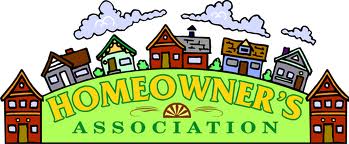Homeowner Associations Can Set Road Fees by Usage Metering
 Homeowner associations are a form of government for neighborhoods and developments throughout America. Water is usually centrally controlled through wells, reservoirs, and household meters.
Homeowner associations are a form of government for neighborhoods and developments throughout America. Water is usually centrally controlled through wells, reservoirs, and household meters.
Monthly fees typically reflect the amount of water a household uses. The first 5,000 gallons, for example, is probably a set monthly base rate for each home, with extra fees for each additional 1,000 gallons after that. Monies collected go into maintenance and replacement of equipment, testing for microbes and chemicals, and similar expenses.
Roads are often handled with a set monthly fee decided upon by the homeowners association’s board of directors or membership. The expenses for grading, adding gravel, maintaining ditches, and asphalt repair might be shared equally by each household.
Road districts are sometimes created as a layer of county government to collect taxes based upon mill levies and property evaluations. Many districts are created simply to get back that part of the tax bills that are collected automatically for, say, secondary roads in the county. These taxes then “disappear” into county-wide road projects, never getting back to private neighborhood road systems.
Once created, the road district then gets this money back that each home in the district has paid in. Of course, the elected road district board then has the power to raise additional taxes through the mill levy process. With a free-floating fear of tax increases, many communities with road districts prefer to use the homeowner associations themselves, which primarily collect for water usage, to also collect fixed road fees for each household. The money is turned over to the road district, raising and lower set fees as circumstances require. The district then collects the two sources of money for its operating budget.
Assessing road fees in sprawling developments or districts can be judged unfair, however. Homes with higher assessment might have to pay a disproportionate mill levy for the road district, while perhaps using the road system far less than others. Other homes might use the road for only a  block or so, while others use miles of roadway. Some have more drivers than others coming and going each day.
block or so, while others use miles of roadway. Some have more drivers than others coming and going each day.
One solution is to meter the distance from the home to the exit end of the community road system. This is easily done with later model cars that have odometers which can register tenths of a mile (photo). Then add up the number of licensed drivers in the household and do some quick math to set monthly fees by. It’s not precise, but good enough to establish fair cost-sharing.
 Homeowner associations are a form of government for neighborhoods and developments throughout America. Water is usually centrally controlled through wells, reservoirs, and household meters.
Homeowner associations are a form of government for neighborhoods and developments throughout America. Water is usually centrally controlled through wells, reservoirs, and household meters. block or so, while others use miles of roadway. Some have more drivers than others coming and going each day.
block or so, while others use miles of roadway. Some have more drivers than others coming and going each day.